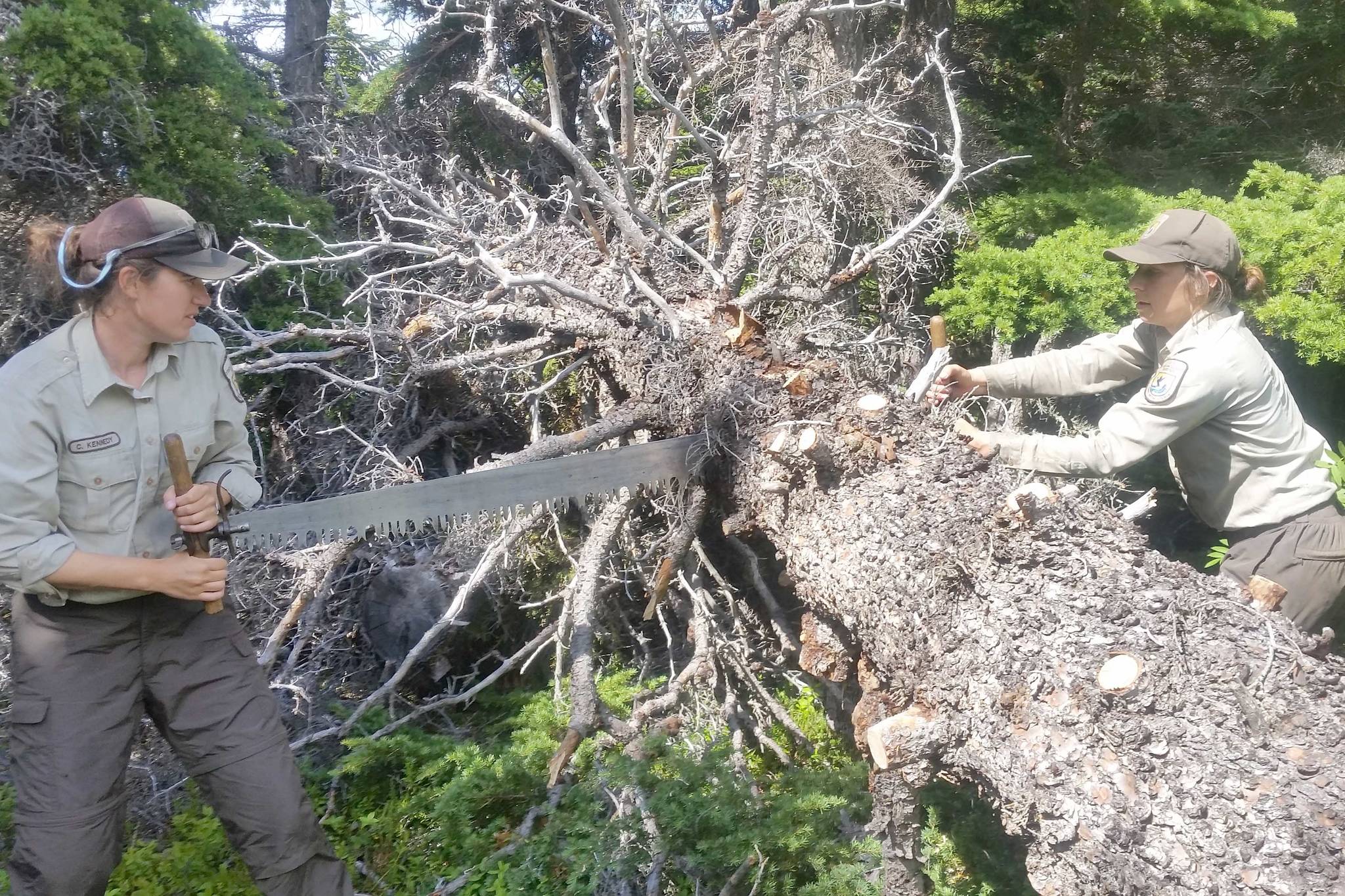The Kenai National Wildlife Refuge is 1.92 million acres. What many people don’t realize is that 1.3 million acres of this was designated as Kenai Wilderness by the U.S. Congress in 1980. Our designated Kenai Wilderness is divided, in turn, into three different wilderness units.
The Dave Spencer Wilderness Unit includes both the Swan Lake and Swanson River canoe systems that contain over 100 miles of lakes, portages and small rivers. The Mystery Creek Unit, located north of the Sterling Highway from Milepost 55 to 61, plays home to the Skyline and Fuller Lakes trails. The largest of the three units, the Andrew Simons Wilderness, embraces refuge lands south of Skilak Lake down to the Caribou Hills, including 50 miles of trails mostly on the Tustumena Benchlands.
These three units hold the majority of trail miles within the National Wildlife Refuge System. You might expect the refuge’s trail crew would use chain saws, all-terrain vehicles and other power tools for trail maintenance, but that’s not the case. The 1964 Wilderness Act tells us to protect and preserve wilderness character, specifically prohibiting the use of mechanized and motorized tools to protect lands and habitats.
We have used chain saws in the past in Kenai Wilderness but, over the last several years, our trail crew has received training to help us better manage in ways that are more consistent with wilderness legislation and policy. In spring 2017, the trail crew completed a weeklong course to help build our knowledge and skill level in using traditional hand tools to log out and brush our wilderness trails.
You might think it can’t be that difficult to get into the swing of things, right? Well, we spent one and a half days just making a personal, handcrafted ax for each crew member, ensuring that our ax heads were firmly and correctly set on their ax handle, which we custom-fitted to each individual.
The first step is getting the correct handle length for each member. We then shave the handle so its width fits comfortably in our hands. The third step is to sharpen the ax’s blade.
We start with a file, but eventually move on to a sharpening stone. Just squirt a little WD-40 on the stone and rub it in a circular motion on the blade’s edge. Once the blade is sharp enough to cut off arm hair, the ax is almost ready for the field. In the final step, we rub linseed oil into the handle to protect it and help it last longer.
We also learned to use a crosscut saw. We quickly discovered that using a crosscut saw takes teamwork and good communication if the plan is to double buck.
Just like when using a chain saw, we have to determine what kind of bind the tree has, making sure wedges are placed at the right time and place so the saw doesn’t get pinched in the tree.
There are a few golden rules to follow when double-bucking. Start your buck in a spot on the log without any knots in or around the area, but that’s way easier said than done.
Never push the saw — always pull. Allow your partner to pull the saw while you just guide it. Conversely, when you pull the saw, your partner guides the saw, ensuring an even amount of wood is taken with each stroke.
The bucking partners also need to decide when to place a wedge to keep the cut open. Finally, as the bucking partners approach the end of their cut, they’ll have to decide if it’s better to finish as a double or single buck.
With our new training, the Kenai trail crew has moved completely away from mechanized and motorized tools to using nothing but traditional tools within the three wilderness units. As we are still learning to master these tools, we are a bit slower at maintaining the trails. The trade-off is that you and other visitors will be able to enjoy the solitude of the Kenai Wilderness and not see the telltale signs of modern machinery.
Christa Kennedy is the Trails Volunteer Coordinator for the Kenai National Wildlife Refuge. Find more Refuge Notebook articles (1999-present) at https://www.fws.gov/Refuge/Kenai/community/Refuge_notebook.html.

